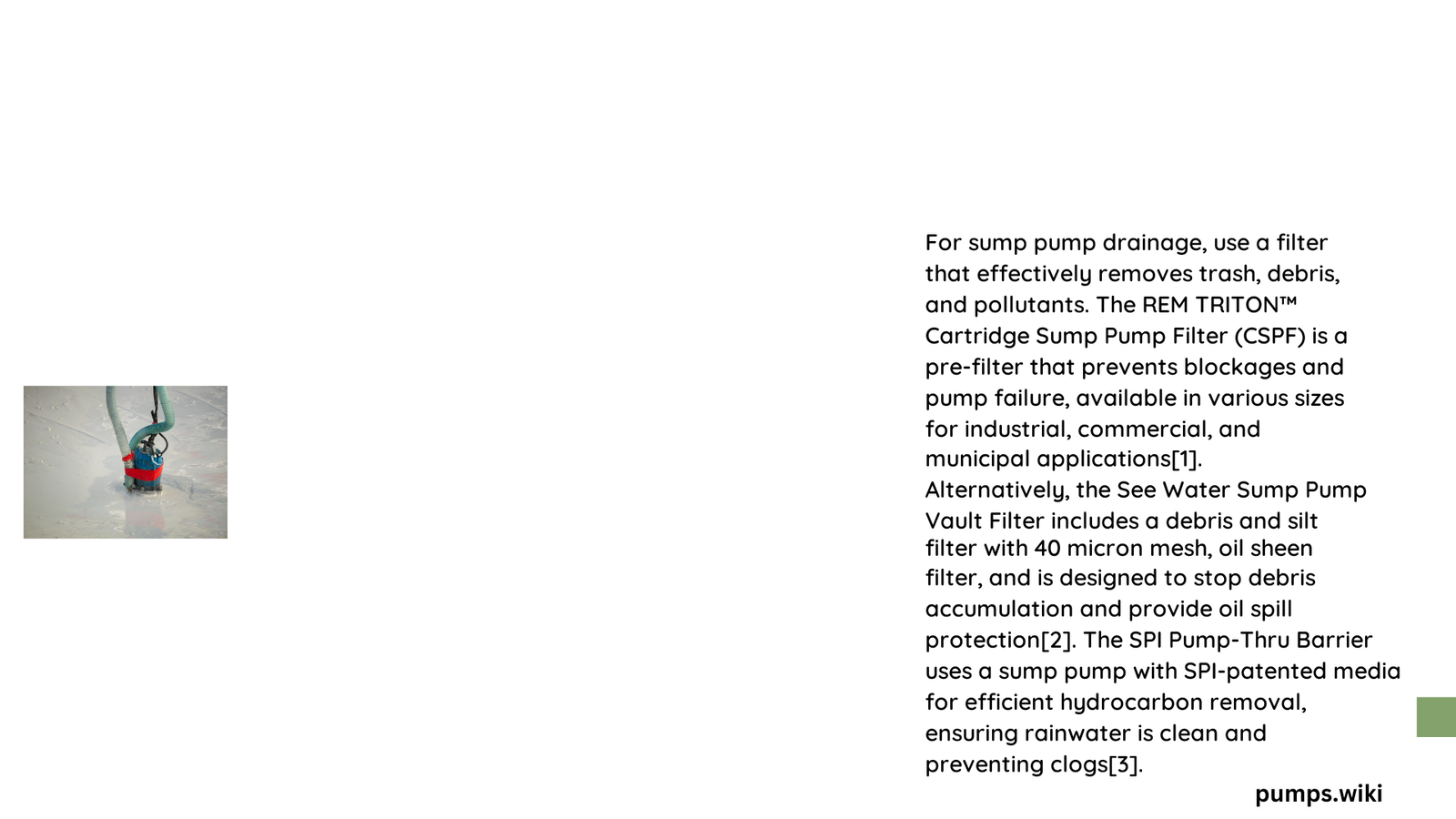Sump pump drainage filters are critical components in preventing basement flooding and protecting your home’s foundation from water damage. These specialized filters trap sediment, debris, and potential contaminants before they enter or exit your sump pump system, ensuring optimal performance and longevity of your water management infrastructure.
What Are the Primary Types of Sump Pump Drainage Filters?
Sump pump drainage filters come in two primary configurations, each serving a unique purpose in water management:
1. Inlet Filters: First Line of Defense
Why Are Inlet Filters Critical?
- Prevent large debris from entering the sump pump
- Protect pump mechanisms from potential damage
- Reduce wear and tear on internal components
| Filter Type | Micron Rating | Material | Average Cost |
|---|---|---|---|
| Polypropylene Inlet Filter | 100-200 microns | Polypropylene | $30-$75 |
| Stainless Steel Mesh Filter | 50-150 microns | Stainless Steel | $50-$100 |
2. Discharge Hose Filters: External Protection
What Functions Do Discharge Filters Serve?
- Block debris from entering drainage lines
- Prevent potential clogs in exterior drainage systems
- Maintain consistent water flow during pumping
Key Considerations for Filter Selection
Factors Influencing Filter Performance
- Water source characteristics
- Local sediment levels
- Pump system specifications
- Budget constraints
How to Choose the Right Sump Pump Drainage Filter?

Evaluation Criteria
- Micron Rating: Lower micron ratings indicate finer filtration
- Material Durability: Select corrosion-resistant materials
- Maintenance Requirements: Consider ease of cleaning
- Compatibility: Ensure proper fit with existing pump system
Installation Best Practices
Inlet Filter Installation Steps
- Turn off power to sump pump
- Remove existing inlet connection
- Clean connection points thoroughly
- Install new filter with appropriate sealing
- Secure connections to prevent leakage
Discharge Filter Installation Guidelines
- Locate discharge line exit point
- Measure appropriate filter dimensions
- Cut and install filter inline
- Ensure secure, leak-free connections
What Maintenance Strategies Maximize Filter Effectiveness?
Routine Maintenance Checklist
- Inspect filters quarterly
- Clean or replace filters every 6-12 months
- Monitor water flow rates
- Check for signs of sediment accumulation
Cost-Effective Maintenance Tips
- Use manufacturer-recommended cleaning solutions
- Invest in high-quality initial filters
- Schedule regular professional inspections
Common Challenges and Solutions
Potential Filter Issues
- Reduced water flow
- Premature filter clogging
- Improper installation
Troubleshooting Strategies
- Regular cleaning schedules
- Professional system assessment
- Upgrade to higher-quality filters
Economic Impact of Proper Filtration
Long-Term Benefits
- Reduced pump replacement costs
- Minimized basement water damage
- Enhanced system efficiency
Estimated Savings
- Potential repair cost prevention: $2,000-$10,000
- Extended pump life: 3-5 additional years
- Lower energy consumption
Expert Recommendations
Professional Insights
- Always prioritize quality over cost
- Match filter specifications to specific water conditions
- Consider professional installation for complex systems
Conclusion
Selecting the right filter for sump pump drainage requires careful consideration of multiple factors. By understanding your specific needs and implementing strategic filtration, you can protect your home’s foundation and ensure efficient water management.
